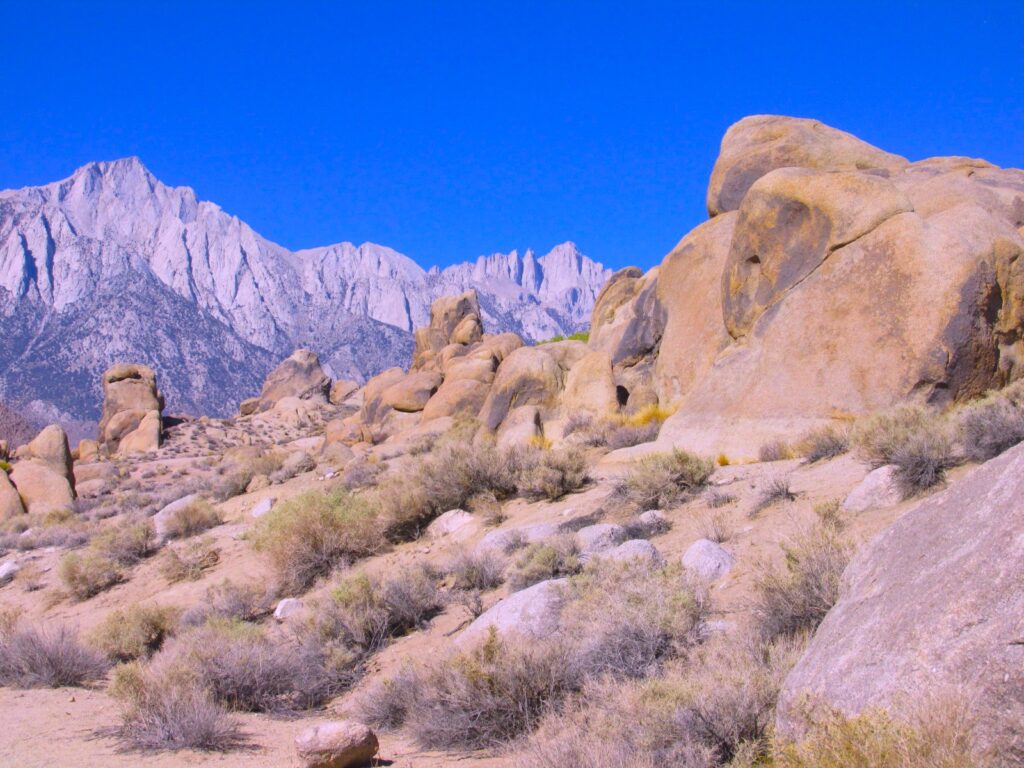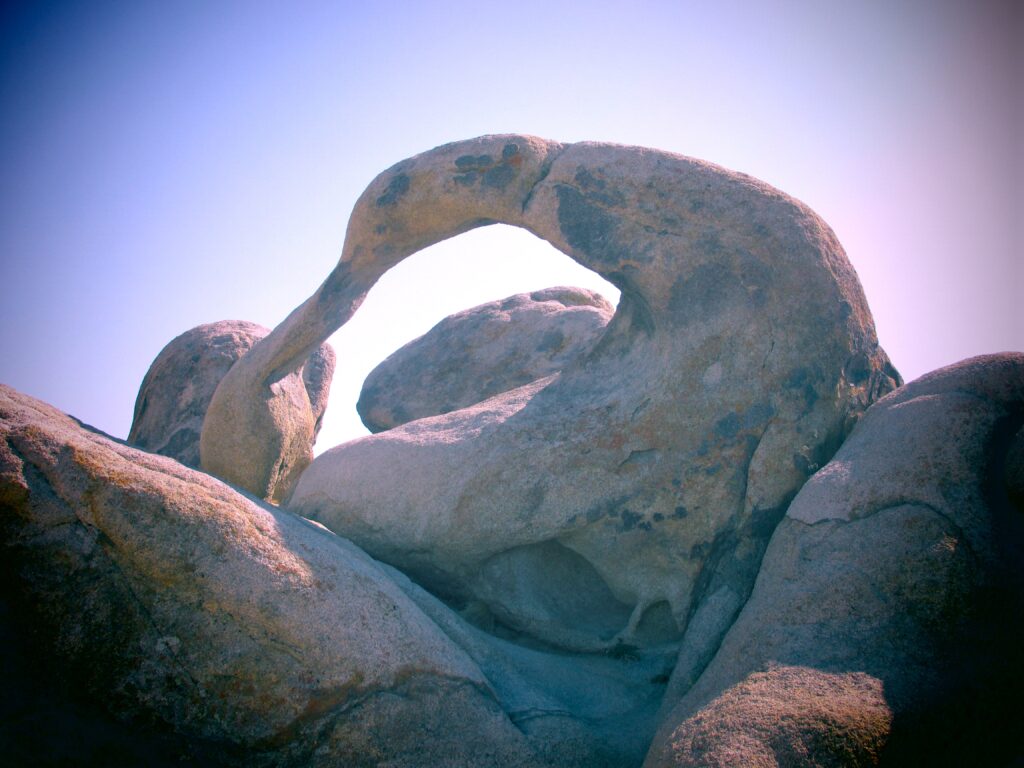the Sierra Nevada
California
September 2016
Four blocks north of the Lone Pine Film History Museum in the center of town, you can turn west onto Whitney Portal Road. Drive 11.7 miles and you are at a campground. We’ll do that later. For now, we turn right in 2.7 miles onto Movie Road. Another 1.6 miles and we come to the parking lot. I would say, prepare to be amazed, but if you’ve looked out your window at all on this drive, you are already blown away. 30 000 acres (47 square miles) of a strange and wonderful area of rounded, sculpted granite rock, and you are in the Alabama Hills on the eastern slope of the Sierra Nevada mountain range.

You may have seen this place before as it is the area often used to portray the prototypical “Wild West.” Once Hollywood discovered the Alabama Hills, it became a favorite area for shooting films, television shows, commercials and flat advertising still photographs. The Alabama Hills has served as the setting for northern India, the Gobi Desert, Arabia and in a couple of Tarzan films, equatorial Africa.
What a place! This is where Roy Rogers first found Trigger and where the Lone Ranger got his name. Films ranging from Superman with Kirk Alyn in 1948 to Man of Steel with Henry Cavill in 2013. From the original A Star is Born with Janet Gaynor in 1937 to Gladiator with Russell Crowe in 2000. Possibly The Flintstones was shot here several thousand years ago, but this is unsubstantiated.
These are some of the more than 500 films, television shows and commercials that have been staged here. Could be one of the most famous places where nobody knows the name.
Pop culture. Movies, actors, videotape, streaming, stories condensed to bite-size for the general public. But for Lisa and me, this is not the amazing thing about this place. Admittedly it is the landscape that drew all the Hollywood activity here, but ask Lisa and me how many of these movies we have seen and our answer would be akin to how many curling players we can name who are in the Hall of Fame: not many, about zero. That’s okay. We still get out a lot.
The land here is made of the same stuff as the stone spires, spiky formations and rocky slopes of Mount Whitney. But lower down, here at four and five thousand feet, earthquakes covered the land with soil. Water was forced up through the surface and smoothed the granite into the rounded field of rock we find today.
Higher, the freezing, expanding and thawing of rainwater and melting snow has caused the more chiseled splintering of the granite.
I’m going to quote this geek speak:
There are two main types of rock exposed at Alabama Hills. One is an orange, drab weathered metamorphosed volcanic rock that is 150-200 million years old. The other type of rock exposed here is 82- to 85-million-year-old biotite monzogranite which weathers to potato-shaped large boulders, many of which stand on end due to spheroidal weathering acting on many nearly vertical joints in the rock.

Due to the endless weathering, holes have been worn in some of the rocks, or as we like to call them, the rocks have formed arches. At least 44 named arches are spread around here and there are no doubt hundreds more.
